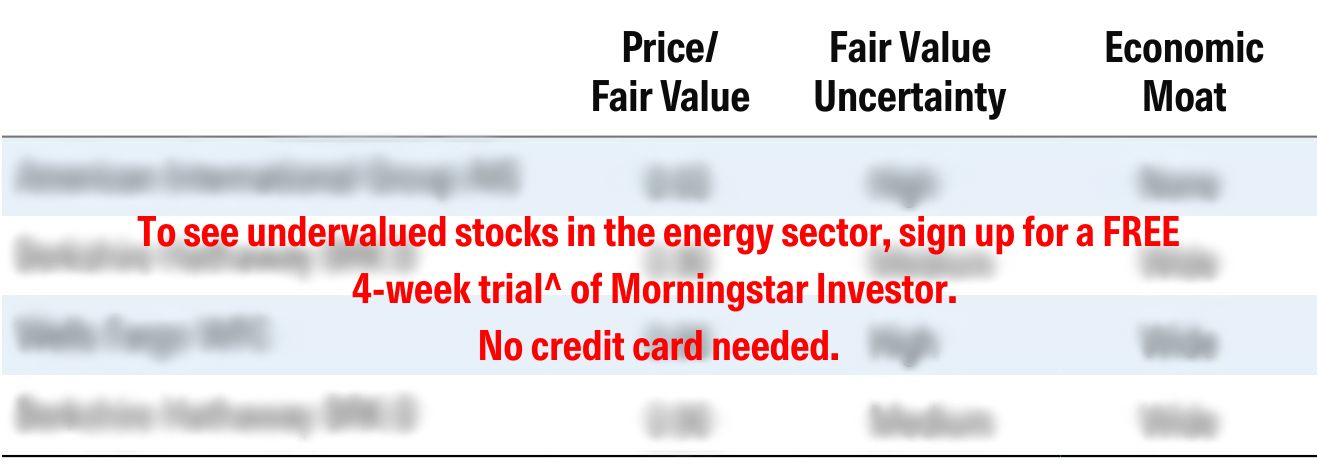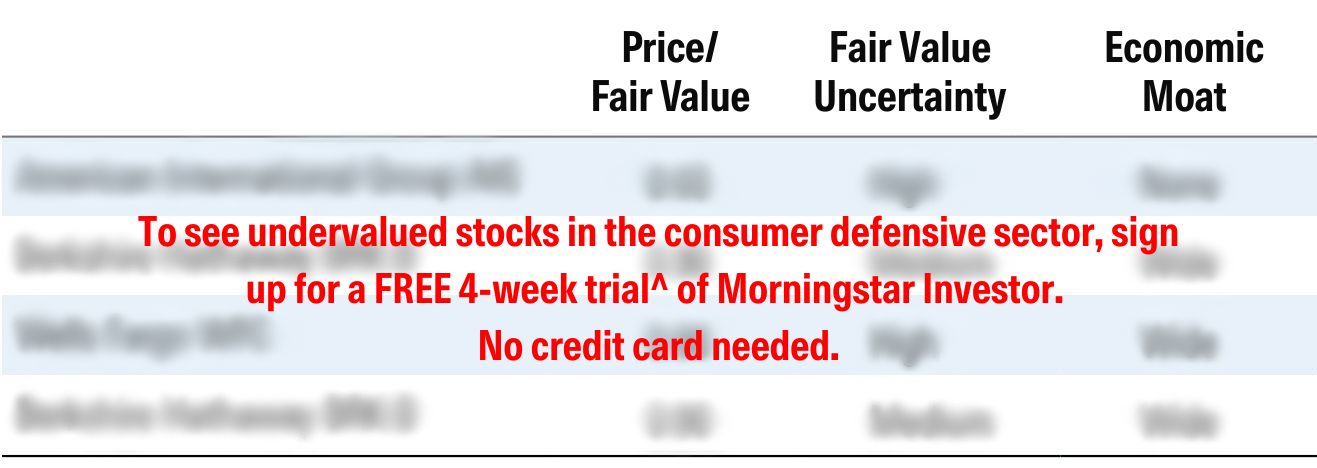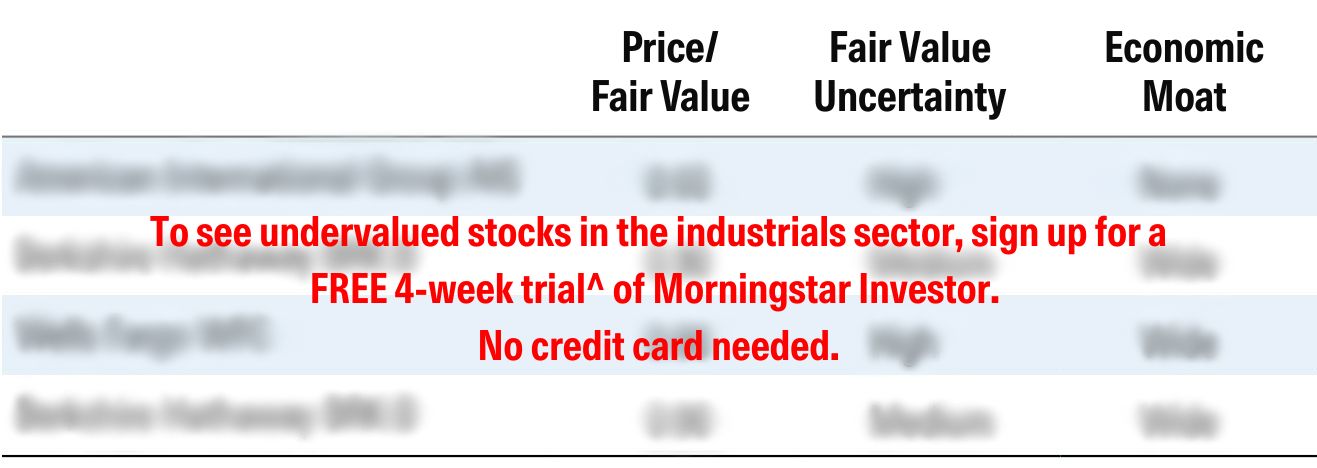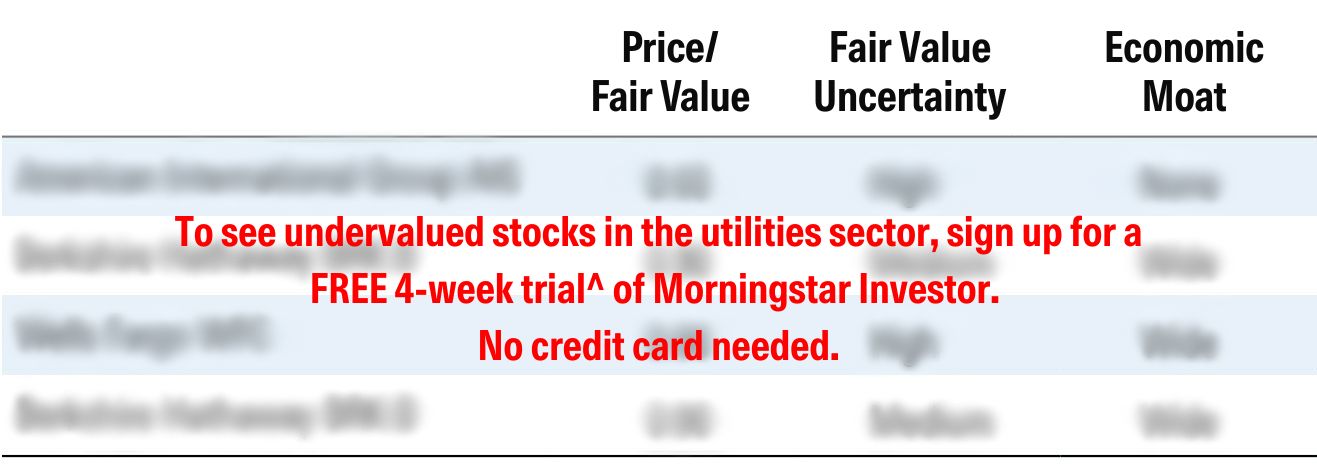STOCKS
33 Undervalued ASX Stocks For 2025
We share our outlook for different sectors in Australia and highlight opportunities in 2025.
New Morningstar research has revealed that the energy, basic materials, healthcare and consumer sectors are undervalued (as of Jun 30, 2025), despite higher share prices in recent months. We see stark divergences across sectors.
We have identified several stocks trading at attractive prices, with certain names trading at discounts to their long-term intrinsic value of up to 40% or more as of 30 June 2025.

Morningstar valuation overview of Australian-listed firms under coverage as of 30 June 2025. 4- and 5-star ratings mean the stock is undervalued, while a 3-star rating means it's fairly valued, and 1- and 2-star stocks are overvalued.
Here’s a brief summary of how valuations stack up across sectors and where investors may find opportunities. Data is as of 30 June 2025.
Skip to sector:
- Energy
- Financial Services
- Technology
- Basic Materials
- Communication Services
- Consumer Cyclical
- Consumer Defensive
- Healthcare
- Industrials
- Real Estate
- Utilities
Energy
The energy sector is significantly undervalued. Israeli strikes on Iran, followed by US bombing of nuclear sites, saw the Brent crude price rise 28% to a USD 77 per barrel peak against May 2025 lows. But prices have since eased off, with little change in global oil fundamentals. This is likely what equity markets reflect.
An ample supply is available to cover seasonally strong Northern hemisphere demand. Oil futures suggest lower prices ahead, albeit futures can be poor predictors. However, OPEC appears intent on adding volumes through the end of the year, and markets are likely to be oversupplied, with inventories expected to be higher, which will weigh on prices.
Regardless, with oil-leveraged stocks undervalued in our view, assuming a long-term USD 60 per barrel oil price, we continue to see opportunity in key energy names.
Near-term thermal coal prices are modestly higher than last quarter as lower demand is more than offset by some miners, reducing production in response to cyclically low prices. In the longer term, demand for high-quality thermal coal is likely to persist, with supply likely restrained due to ESG and regulatory opposition, supporting prices.
Undervalued stocks in the Energy sector
To see undervalued stocks in the energy sector, sign up for a FREE 4-week trial^ of Morningstar Investor (no credit card needed) to access all our latest best ASX energy stock picks inside our ‘Australia Equity Market Outlook: Q3 2025’ Your Money Weekly issue, plus our premium stock screener that will help you identify all stocks in the energy sector currently trading at a 4- or 5- star rating.
Financial Services
Most bank share prices have run ahead of fundamentals. Bank net interest margins are softening due to competition for mortgages and the lingering impact of customers switching from transaction accounts to more expensive deposit products.
Over time, we expect competitive intensity to ease as nonmajor banks look to lift subpar returns on equity. Low bad debt expenses are helping soften the hit to earnings and are likely feeding into the more favorable rates for customers. Credit growth is healthy, well supported by population growth and solid house prices. Banks are nearing the end of announced on-market buybacks but still hold surplus capital, which supports the outlook for modest dividend growth.
Lower-than-expected natural hazard expenses, higher investment income, and consecutive years of large premium rate increases result in general insurer profitability at excessive levels. The market appears to be extrapolating this. We expect competition for market share to weigh on future returns, given the commoditized nature of insurance.
Investor sentiment has improved since the initial tariff announcements, although we expect asset manager fund flows to remain soft. Uncertainty stemming from trade negotiations and geopolitical tensions, inflation and interest rate fears, and the increased adoption of passive investment options present challenges to flows.
Undervalued stocks in the Financial Services sector
To see undervalued stocks in the financial services sector, sign up for a FREE 4-week trial^ of Morningstar Investor (no credit card needed) to access all our latest best ASX financial services stock picks inside our ‘Australia Equity Market Outlook: Q3 2025’ Your Money Weekly issue, plus our premium stock screener that will help you identify all stocks in the financial services sector currently trading at a 4- or 5- star rating.
Technology
Technology stocks screen as overvalued, on average. We believe investor optimism is premature and underestimates downside risks, particularly from unresolved tariff uncertainties. Although recession risks have receded, tariffs are likely to reignite inflationary pressures and reduce the number of expected interest rate cuts, which could weigh on global growth and challenge elevated stock valuations.
Much of our coverage is expensive and exposed to downside earnings risk. An earnings downturn could impair the competitive positioning of firms.
Firms with economic moats, exposure to structural growth trends, or higher-quality customer bases are better placed to withstand macroeconomic headwinds.
We also see better relative value in some oversold names.
Undervalued stocks in the Technology sector
To see undervalued stocks in the technology sector, sign up for a FREE 4-week trial^ of Morningstar Investor (no credit card needed) to access all our latest best ASX technology stock picks inside our ‘Australia Equity Market Outlook: Q3 2025’ Your Money Weekly issue, plus our premium stock screener that will help you identify all stocks in the technology sector currently trading at a 4- or 5- star rating.
Basic Materials
The basic materials sector underperformed in the June quarter and remains moderately undervalued on average. Commodity prices were mostly flat to down on subdued global economic growth. However, gold continued to rise on safe-haven demand, reaching new all-time highs before falling modestly. Our gold mining coverage is now overvalued.
The iron ore price was modestly lower than last quarter due to reduced China steel production and weak end-user demand. With China responsible for about 70% of seaborne demand, we are bearish on the iron ore price in the longer term as China moves to a less commodity-intensive economy. This suggests the market is now more than pricing in headwinds such as lower China steel production and rising scrap use, a falling population, slower urbanization, lower returns on infrastructure investment, and increasing trade disputes.
Copper was broadly unchanged during the quarter despite tariff-inspired economic growth concerns. Refined copper demand from China, more than half the global total, is solid. But we think copper faces many of the same long-term headwinds as iron ore.
While lithium prices were also down, we are bullish over the medium term and think prices will recover to the marginal cost of production of about USD 20,000 per metric ton.
Undervalued stocks in the Basic Materials sector
To see undervalued stocks in the basic materials sector, sign up for a FREE 4-week trial^ of Morningstar Investor (no credit card needed) to access all our latest best ASX basic materials stock picks inside our ‘Australia Equity Market Outlook: Q3 2025’ Your Money Weekly issue, plus our premium stock screener that will help you identify all stocks in the basic materials sector currently trading at a 4- or 5- star rating.
Communication Services
The telecommunications sector has rallied strongly, up 14% year-to-date. Ongoing cost-cutting and the potential for artificial intelligence to further reduce fixed costs present a resilient outlook for the sector. Employee costs account for between 12% and 30% of the operating expenses of our telecom coverage. As AI advances, it will play an increasing role in customer service and network maintenance, enabling firms to operate with lower headcounts.
With the likelihood of lower fixed costs and capital expenditure peaking as 5G investment slows, we forecast moderate EBITDA growth and increasing free cash flow across our telecom coverage.
Media began the year strongly, outperforming the broader market. We expect this to continue as media companies benefit from an advertising recovery. Advertising accounts for 60% to 90% of revenue among ANZ media groups under our coverage and is closely tied to corporate confidence and consumer sentiment. Geopolitical tensions and their impact on corporate and consumer sentiment pose a risk.
Despite the strong share price performance from the recent advertising expenditure uplift, most media companies we cover are undervalued, trading at between 4 and 6 times our EBITDA forecasts. Long-term structural concerns remain, as do the concerns regarding content costs and the ability to monetize digital assets. However, these risks are sufficiently reflected in the low trading multiples, which do not factor in any potential for advertising recovery.
Undervalued stocks in the Communication Services sector
To see undervalued stocks in the communication services sector, sign up for a FREE 4-week trial^ of Morningstar Investor (no credit card needed) to access all our latest best ASX communication services stock picks inside our ‘Australia Equity Market Outlook: Q3 2025’ Your Money Weekly issue, plus our premium stock screener that will help you identify all stocks in the communication services sector currently trading at a 4- or 5- star rating.
Consumer Cyclical
The near-term outlook for the greater consumer cyclical sector is positive. After a period of rampant inflation and associated cost-of-living pressures, real household incomes are growing again. Inflation is back under the Reserve Bank’s control, shifting the focus to keeping the job market strong. Monetary settings are still slightly restrictive, providing room for more easing. Further interest rate cuts could boost consumer sentiment and support retail spending over the fiscal year ahead.
We expect goods consumption to rise. A mix shift to services and an increasing savings rate have dampened goods consumption recently. We think these factors are weakening.
First, a reversal of the huge mix shift to goods from services that occurred during the lockdowns is complete. The gradual structural shift to a greater share of services consumption, away from goods, is a slight headwind but much less impactful than the recent unwinding of pandemic distortions. Second, the savings rate has returned to near normal levels. During the cost-of-living crisis, marked by declining real incomes, households supplemented their spending by drastically dropping the savings rate. By March 2025, the savings rate had recovered to over 5%, from below 2% in 2023.
Although the overall outlook is positive, we expect some categories to fare relatively better. We forecast hardware and takeaway sales growth to outperform, as the construction market and consumer sentiment improve.
Undervalued stocks in the Consumer Cyclical sector
To see undervalued stocks in the consumer cyclical sector, sign up for a FREE 4-week trial^ of Morningstar Investor (no credit card needed) to access all our latest best ASX consumer cyclical stock picks inside our ‘Australia Equity Market Outlook: Q3 2025’ Your Money Weekly issue, plus our premium stock screener that will help you identify all stocks in the consumer cyclical sector currently trading at a 4- or 5- star rating.
Consumer Defensive
Online sales are materially outperforming physical stores for supermarkets. Australian online grocery sales are up 16% from a year ago, while brick-and-mortar sales are up only 2% and lag a 4% increase in hourly wages. This is an earnings headwind. Online sales are less profitable than in-store, especially if delivered and not picked up by customers. The 3% margin for e-commerce is half the in-store EBIT margin.
We think liquor sales have bottomed. We think this reflects a cyclically weak trading environment amid elevated cost-of-living pressures. We expect liquor sales momentum to improve alongside household incomes.
Consumers are increasingly snubbing cheaper wines. The wine market is in persistent oversupply, and competition for mass-market wines is fierce.
Undervalued stocks in the Consumer Defensive sector
To see undervalued stocks in the consumer defensive sector, sign up for a FREE 4-week trial^ of Morningstar Investor (no credit card needed) to access all our latest best ASX consumer defensive stock picks inside our ‘Australia Equity Market Outlook: Q3 2025’ Your Money Weekly issue, plus our premium stock screener that will help you identify all stocks in the consumer defensive sector currently trading at a 4- or 5- star rating.
Healthcare
We view the healthcare sector as overvalued on average; however, approximately half of our coverage is 4- or 5-star-rated.
The most significant recent news was the announcement of reciprocal tariffs on US trading partners. Out of 12 names in our healthcare coverage with revenue exposure to the US, we see tariffs directly affecting four companies. However, we expect these four companies to largely offset the negative impact in the long term through price increases and adjustments to their supply chains.
Medicare Australia statistics for benefits paid in core pathology and diagnostic imaging for the five months to May 2025 increased by a healthy 5% and 7%, respectively. Industry growth is performing broadly in line with our expectations, and we maintain our 10-year industry growth forecast for pathology and diagnostic imaging at 5% and 7%, respectively. Shares in diagnostic providers are undervalued as we remain optimistic about industry profitability improving. We expect margin expansion due to increased operating leverage from higher volumes and improved labor productivity as digitization and newer artificial intelligence tools expedite diagnoses. Inflation of the main costs, labor, and rents, is also easing.
Undervalued stocks in the Healthcare sector
To see undervalued stocks in the healthcare sector, sign up for a FREE 4-week trial^ of Morningstar Investor (no credit card needed) to access all our latest best ASX healthcare stock picks inside our ‘Australia Equity Market Outlook: Q3 2025’ Your Money Weekly issue, plus our premium stock screener that will help you identify all stocks in the healthcare sector currently trading at a 4- or 5- star rating.
Industrials
About one-third of industrial stocks are now 4- or 5-star-rated, from roughly half at the end of March. Following the specter of tariffs, the market is now more optimistic, with some tariffs already wound back and others anticipated to be reduced or removed as countries negotiate with the US. Nonetheless, as of the end of May, the average US tariff was nearly 19%, still significantly up from the 2024 level of 2.4%. It matches highs not seen since the 1930s.
Shares in urban services businesses have performed strongly, with their inflation-linked government contracts viewed as largely tariff-immune.
Undervalued stocks in the Industrials sector
To see undervalued stocks in the industrials sector, sign up for a FREE 4-week trial^ of Morningstar Investor (no credit card needed) to access all our latest best ASX industrial stock picks inside our ‘Australia Equity Market Outlook: Q3 2025’ Your Money Weekly issue, plus our premium stock screener that will help you identify all stocks in the industrials sector currently trading at a 4- or 5- star rating.
Real Estate
The real estate sector was relatively unperturbed by tariff news. In the June quarter, A-REITs edged higher in line with the market, driven by lower bond yields. Overall, the sector is modestly undervalued, but a few companies appear particularly cheap.
The volumes of commercial property transactions continued to recover, suggesting asset prices may have bottomed, and investor interest is rekindling. Momentum is likely to build given the subdued interest rate outlook and the relatively weak Australian dollar.
Undervalued stocks in the Real Estate sector
To see undervalued stocks in the real estate sector, sign up for a FREE 4-week trial^ of Morningstar Investor (no credit card needed) to access all our latest best ASX real estate stock picks inside our ‘Australia Equity Market Outlook: Q3 2025’ Your Money Weekly issue, plus our premium stock screener that will help you identify all stocks in the real estate sector currently trading at a 4- or 5- star rating.
Utilities
Utilities lagged the broader market last quarter. There is now little value to be found in the sector.
In Australia, default electricity prices are rising to pass through higher network, generation, and retailer costs. In this environment, the outlook for utilities is solid, though higher electricity prices will likely reduce customer demand and encourage churn, a minor headwind. Far more material would be if higher oil prices push up prices for alternative fuels like gas and coal.
Undervalued stocks in the Utilities sector
To see undervalued stocks in the utilities sector, sign up for a FREE 4-week trial^ of Morningstar Investor (no credit card needed) to access all our latest best ASX utilities stock picks inside our ‘Australia Equity Market Outlook: Q3 2025’ Your Money Weekly issue, plus our premium stock screener that will help you identify all stocks in the utilities sector currently trading at a 4- or 5- star rating.
Looking for more stock ideas?
The Morningstar Rating for shares can help investors uncover stocks that are truly undervalued, cutting through the market noise.
Investors can turn to several metrics to gauge a stock’s worth. Some investors use standard metrics, such as price/earnings or price/cash flows. Others may look at a stock’s price relative to a company’s future growth prospects, or where a stock is trading relative to its 52-week high price.
At Morningstar, we define undervalued stocks as those that are trading below our calculated fair value estimate, adjusted for what we call uncertainty—both of which are wrapped into the Morningstar Rating for stocks. Stocks rated 4 and 5 stars are undervalued; those rated 3 stars are fairly valued, and those rated 1 or 2 stars are overvalued.
To see our current 5-star rated stocks and best ideas, or screen our database of over 46,000 ASX & Global companies, sign up for a FREE 4-week trial^ of Morningstar Investor.
5-star Australian shares

Global equity best ideas

Australian stocks with moats

Inexpensive growth

Sustainable income

Inexpensive quality

5-star North American shares

5-star Asian stocks

About Us
Morningstar started with an idea—one great idea from a 27-year-old stock analyst. Joe Mansueto thought it was unfair that people didn’t have access to the same information as financial professionals. So he hired a few people and set up shop in his apartment in 1984—to deliver investment research to everyone.
Since then, we've empowered millions of investors all over the world, and we’re continuing to look for new ways to help people achieve financial security.
Our research is independent, which means we do not charge or accept payment or commissions from fund managers, listed companies or other product issuers to produce research on their products.













